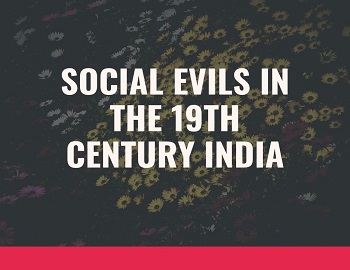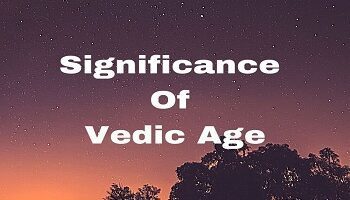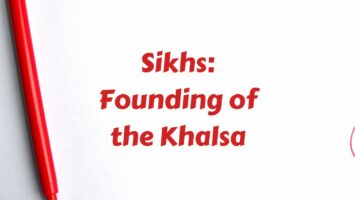Social Evils in the 19th Century India:
Indian society suffered from a host of social evils during the 19th century. The different social reform movements like the Brahmo Samaj, the Indian Social Conference, Mohammedan Literary Society, the Arya Samaj, the Rama Krishana Mission, Theosophical Society etc. were directed against different social evils. Our society was suffering from many evils such as the caste system, deplorable condition of women, illiteracy, child marriage, sati, polygamy etc.
Following are the three main social evils against which the various reform movements were directed in the 19th century.
(A) Deplorable Condition of Women- The condition of women was very deplorable due to the social, religious and economic conditions prevailing in the traditional society. They were given a very low status in society as compared to men. So much so that they had to be completely dependent upon men for their social and economic needs. This condition of women was due to many social evils which were present in Indian society. These evils can be stated as under-
- Sati System- Under this custom, a Hindu woman had to burn herself to death with her dead husband. In the majority of cases they were forced to do so or even thrown into the burning pyres.
- Low Status of Women- Women in those days were denied the right of equality. They were considered as inferior to men. Many restrictions were imposed on them. They were first dominated by father and then by husband and then by sons and in-laws.
- Female Infanticide- The birth of a daughter was considered a great burden on the family. So, in many cases, they were put to death just after their birth. The newly born daughters were strangled (to death) since she had no right to live.
- Denial of Education- They had no right to seek employment. So, there were no arrangement for the education of women. As such, they had to suffer from the curse of illiteracy all through their lives.
- Dowry System- The dowry system has taken a heavy toll of life. Many a poor girl commits suicide to relieve her parent’s agony.
- Patriarchal Families- There were male predominated families. Hence womenfolk were never consulted in serious concerns and matters.
- The Child Marriage- Children in laps got married. The unfortunate child widows suffered life long agony.
- Widow Remarriage not Permitted- A widow was a social burden. She was not granted the right to re-marry. Her very sight was despised. The widow either led a miserbale life or brought an end to her doomed life by committing suicide.
- Deprived of Right to Property- The Hindu woman enjoyed no right to inherit the property of her husband.
- Dread of Divorce among Muslim Women- The Muslim women ever dreaded the divorce. Her life was miserbale since her husband could have many wives. It was an uphill task for her to pull on amidst co-wives.
(B) The Caste-System and Untouchability- Caste-system and untouchability were another most hateful practice in those days. The low-caste members of the society were very much hated. They were made to do all sorts of manual (menial) jobs like cleaning, leatherworking, carrying of dead animals and shoe-making and repairing. Besides these people were regarded as untouchables. They were not allowed to use public wells, tanks, temples, schools etc. They were also not recruited in the army and other government jobs. Thus a great part of a society was not enjoying human rights. Moreover, this evil created a social, economic and political imbalance in Indian social life which caused great harm to society.
Modern social reformers of the 19th century found it necessary to launch an attack on this evil because they considered it to be inhuman and degrading social evil responsible for social disintegration. But, the modern reforms in the field of economy, society and political sphere greatly weakened this evil. The development of the national movement also did a very praise-worthy work in the removal of untouchability. Now, in Free India, the caste system and the practice of untouchability have been forbidden legally.
(C) The Child Marriage- Child marriage was another social evil from which the Indian society of the 19th century was suffering. This evil badly affected the health of the married children and produced several evil effects on society. That is why many social reformers like Raja Ram Mohan Roy, Keshab Chandra Sen, Mahadev Govind Ranade and Swami Dayanand, openly attacked child marriage and campaigned for its abolition. It was because of their efforts that a law was passed in 1860, raising the marriageable age of the girls to ten, which was a significant advance in those days.









Comments (No)